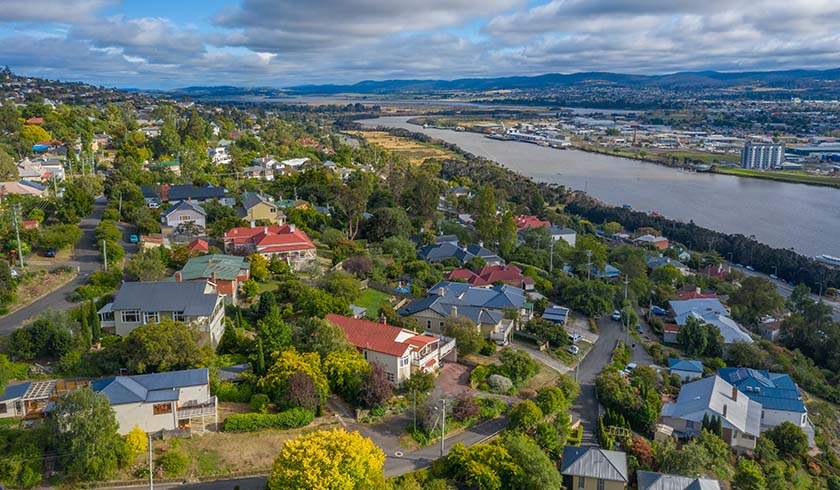Tasmania records strongest market growth in 19 years
Sales numbers across Tasmania surged by over 14 per cent in the first quarter, marking the strongest growth activity in the state since 2002.

New data from the Real Estate Institute of Tasmania (REIT) has revealed a 14.4 per cent annual rise in sales numbers in the first three months of the year, sending the cumulative value of sales to a record $1.45 billion, up 32.1 per cent on the year and the highest ever quarterly value recorded in Tasmania.
Of the 3,205 sales recorded, almost 85 per cent of all transactions were made locally by Tasmanians, while foreign buyers accounted for only 0.4 per cent.
First home buyer and investor activity both remained stable, accounting for 15.7 per cent and 17.5 per cent of total buyer activity, respectively. But while investors continued to dominate the market, their current level of activity remains well below the 21 per cent to 23 per cent recorded prior to 2018.
As for the cumulative value of sales, REIT explained that the figure was driven mostly by a rise in million-dollar sales, which soared 161.8 per cent on the year.
Of the 144 sales amounting to a million or more, 76.4 per cent were made by locals.
According to REIT president Mandy Welling, the strong market conditions across the state have bucked expectations as Tasmania and the rest of Australia come out of a COVID-induced slowdown.
“COVID-19 changed a lot of things for a lot of people. Today we have a local real estate market driven by Tasmanians.
“What we are noticing is a growing trend of increased levels of activity across all regional areas of the state. In particular, [there has been] increased activity in the North West, which had been struggling for so long,” Ms Welling said.
On a municipal level, Launceston recorded the highest number of transactions at 355 sales with a cumulative sum of $145,425,759. This was followed by Clarence with 273 sales worth $147,962,798; Glenorchy with 237 sales worth $103,984,314; Hobart with 225 sales worth $193,814,384, and the Central Coast with 185 sales worth $74,725,294.
Dwelling values also improved across all regions, with house prices increasing by 8.5 per cent to $623,750 in Hobart, 11.4 per cent to $420,000 in Launceston and 28.5 per cent to $379,000 in North West centres.
Battery Point remained the most expensive Tasmanian suburb, with a median price of $1,600,000, followed by Sandy Bay with $1,278,000 and West Hobart with $1,053,250.
On the other hand, the most affordable suburb in the state is Queensland, with a median of $117,500, followed by Rosebery with $132,000 and Zeehan with $135,000.
Rental market
Over the same period, rents across all Tasmanian regions increased by $5 to $30 per week compared with the same period last year as vacancy rates tightened, REIT highlighted.
Launceston recorded the lowest vacancy rate at 1.3 per cent, followed by Hobart with 1.7 per cent. North West centres recorded a vacancy rate of 2.1 per cent – the lowest vacancy rate level recorded since 2008.
But while rents increased, yields continued to fall across the state, with Hobart recording an average 4.4 per cent return, followed by Launceston with 5.2 per cent and the North West centres with 4.8 per cent.
REIT noted that the increases in property prices and rents reflect the critical imbalance between buyers and renters and supply. This rising trend is expected to persist as Tasmania remains a “resurgent market struggling to find the stock we need to satisfy our buyer and rental needs”, Ms Welling forecasted.
“We have and live in one of the safest places in the world, and I believe many people value this.
“People who live here now don’t want to leave, and there are many from other parts of the world that are keen to move here,” the president concluded.
